Lab-in-charge: Dr. Shitendu Some
Details of Laboratory:
Kinematics deals with the relative motion between the parts, neglecting the forces which act on them. Dynamics of machine deals with the forces acting on the different parts of the mechanism. The forces can be either static or dynamic. Also kinetics is the study of forces when the body is in motion, whereas statics deals with forces when the body is stationary. The important areas of dynamics are balancing, vibrations, whirling and other basic principles of applied mechanics which are fully covered using this range of products. This laboratory contains equipments both in the form of working and non-working models through which the students are able to synergies theory and practical skills. Following are the machines/equipment in this lab
Universal Governor Apparatus:
The function of the governor is to regulate the mean speed of an engine, when there is a variation of loads. If the load on the shaft increases, the speed of the engine decreases unless the supply of fuel is increased by opening the throttle valve. On the other hand, if the load on the shaft decreases, the speed of the engine increases unless the fuel supply is decreased by closing the valve sufficiently to slow the engine to its original speed.
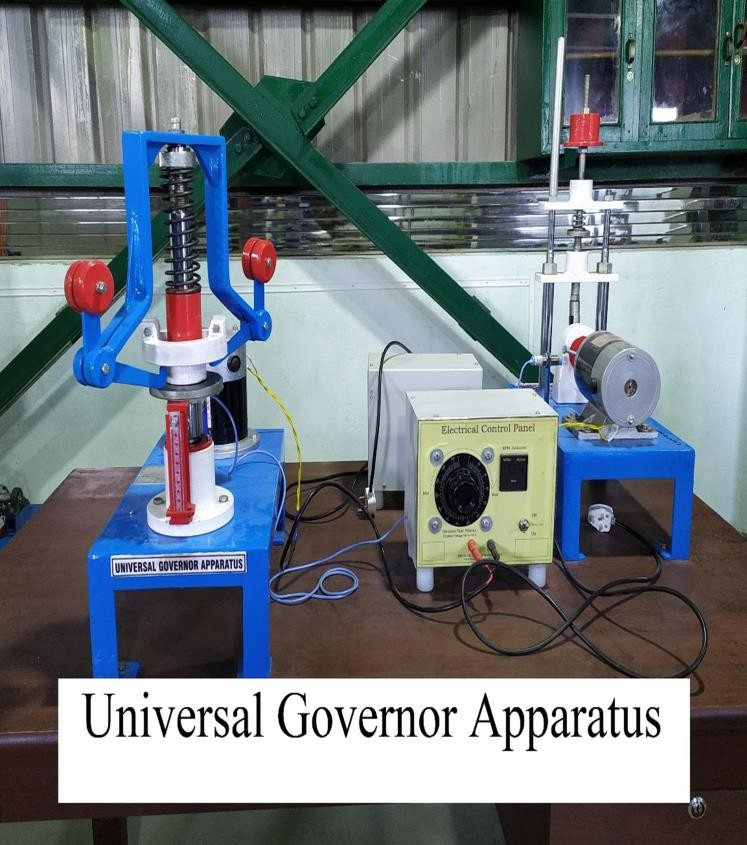
Epicyclic Gear Train Apparatus:
A gear train is a combination of gears used to transmit motion from one shaft to another. It becomes necessary when it is required to obtain large speed reduction. In epicyclic gear train, the axes of some of the wheels are not fixed but rotate around the axes of other wheels with which they mesh. Epicyclic gear trains are useful to transmit very high velocity ratios with gears of smaller sizes in lesser space.
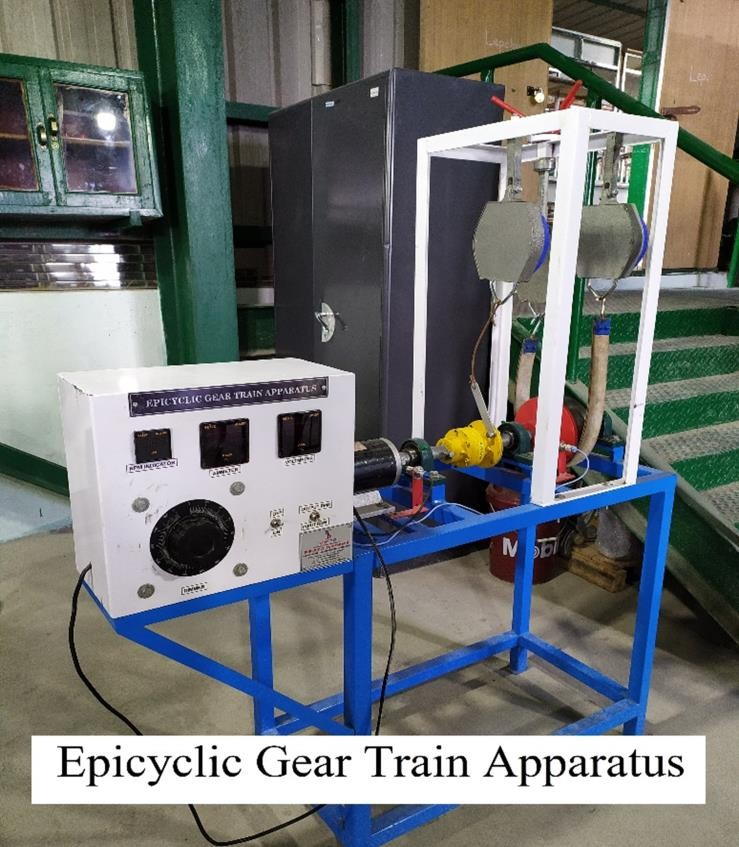
Static & Dynamic Balancing Apparatus:
A system of rotating masses is said to be in static balance if the combined mass centre of the system lies on the axis of rotation. When several masses rotate in different planes, the centrifugal forces, in addition to being out of balance, also form couples. A system of rotating masses is in dynamic balance when there does not exist any resultant centrifugal force as well as resultant couple.

Motorised Gyroscope Apparatus:
This device consisting of a spinning mass, typically a disk or wheel, mounted on a base so that its axis can turn freely in one or more directions and thereby maintain its orientation regardless of any movement of the base. If the axis of the spinning or rotating body is given an angular motion about an axis perpendicular to the axis of the spin, an angular acceleration acts on the body about the third perpendicular axis. The torque required to produce the acceleration is known as active gyroscopic torque. The reactive gyroscopic torque or couple also acts similar to the concept of centripetal and centrifugal forces on a body.
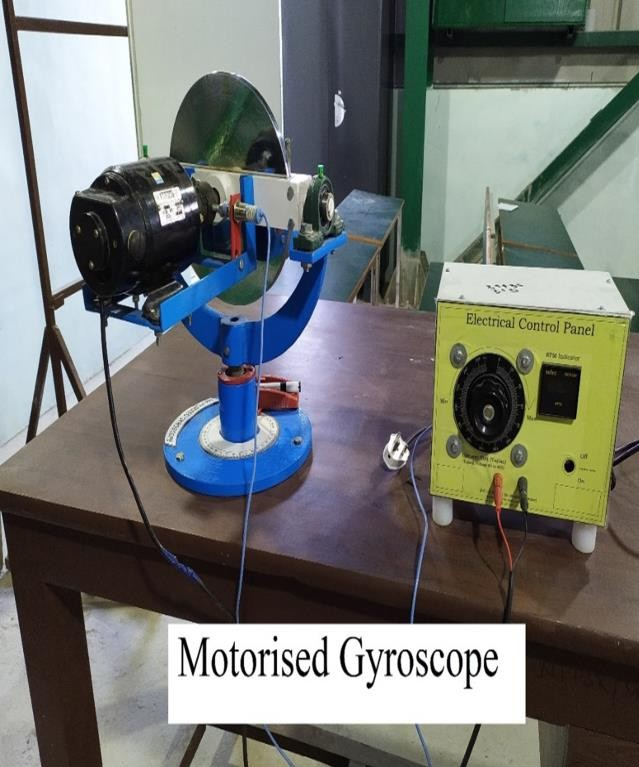
Cam Analysis Machine:
A cam is a mechanical member used to impart desired motion to a follower by direct contact. The cam may be rotating or reciprocating whereas the follower may be rotating, reciprocating or oscillating. Complicated output motions which are otherwise difficult to achieve can easily be produced with the help of cams. Cams are widely used in automatic machines, internal combustion engines machine tools and so on.
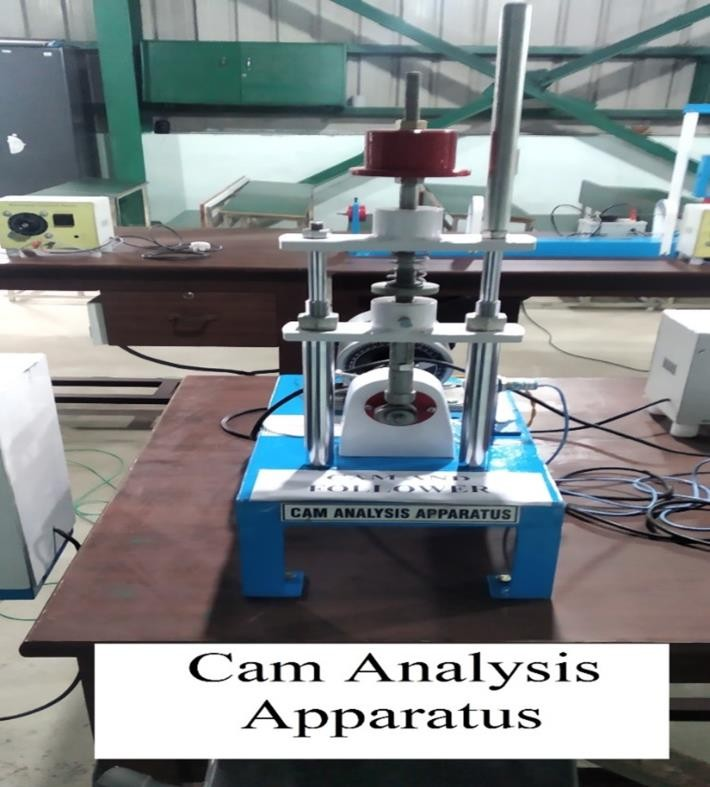
Whirling of Shaft Apparatus:
The rotational speed at which a shaft tends to bow out is called a whirling or whipping or critical speed of the shaft. The apparatus is used to determine the critical speed of the rotating shaft and its theoretical verification. With the help of this experiment an observation of whirl form as well as the observation of self-excited motion (vibration) is also done.

Journal Bearing Apparatus:
In hydrodynamic bearings, the shaft and the bearing shell are separated from each other during operation by a supporting lubricating film. The pressure in the lubricating film in hydrodynamic journal bearings is generated by the relative motion between bearing shell and shaft. The position of the shaft in relation to the speed and the load is important for an analysis of the tribological process in the bearing shell of a journal bearing.
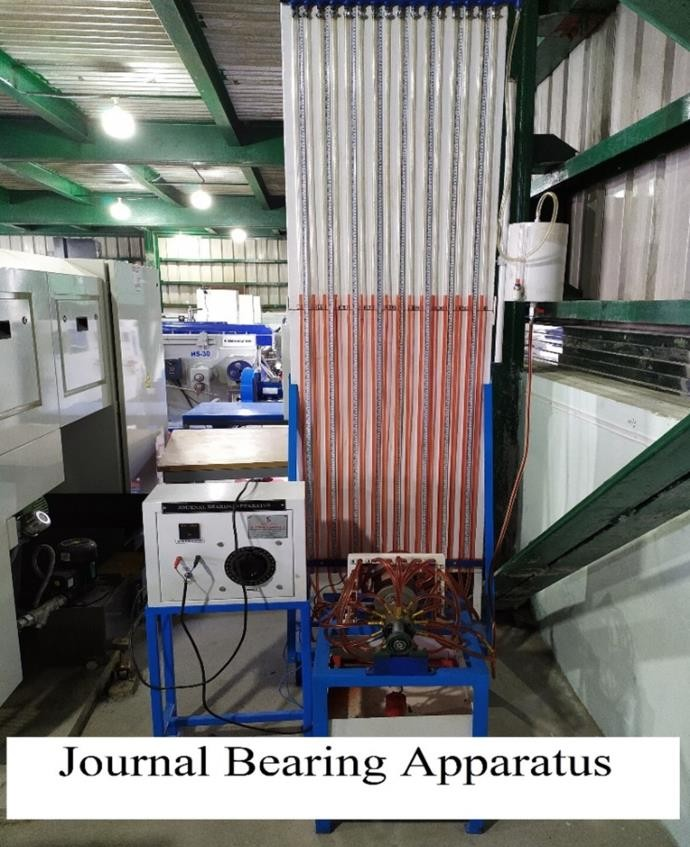
Objective:
Objectives of this Kinematics & Dynamics of Machinery Laboratory are to impart practical knowledge on design and analysis of mechanisms for the specified type of motion in a machine. With the study of rigid bodies motions and forces for the transmission systems, machine kinematics and dynamics can be well understood. Various experiments with governors, gyroscopes, balancing machines are available to understand machine dynamics.
Course Outcome:
Upon completion of this laboratory course, students will be able to
- To develop skills for designing and analyzing linkages, cams, gears and other mechanisms.
- Impart practical knowledge on design and analysis of mechanisms for the specified type of motion in a machine.
- To develop skills for use of mathematics software and for writing computer programs to solve kinematics problems.
- To provide a foundation for the study of machine design.
Safety and Security Rules to be Followed in Laboratory:
Laboratory Courses Conducted:
| Sl. No. | list of experiment |
|---|---|
| 1 | Experiment on Watt and Porter Governor. |
| 2 | Experiment on Proell Governor. |
| 3 | Experiment on Hartnell Governor. |
| 4 | Experiment on Static and Dynamic balancing. |
| 5 | Experiment on Motorised Gyroscope. |
| 6 | Experiment on Epicyclic Gear Train. |
| 7 | Experiment on Whirling of Shaft. |
| 8 | Experiment on Cam and Follower mechanism. |
| 9 | Experiment on Journal Bearing Apparatus. |